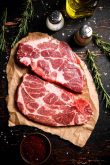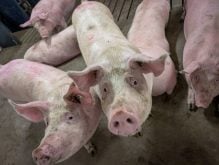Manitoba Pork’s plan to eliminate porcine epidemic diarrhea (PED) is fully operational.
“Starting the plan ahead of potential new cases will help farmers implement the preventative measures included [in] the plan and allow us to broadly discuss the plan with producers and industry service providers,” the farm group wrote in an Oct. 18 newsletter.
Why it matters: Industry has said that the every-other-year PED cycle in Manitoba is not sustainable.
Read Also

Seeding Indigenous agricultural prosperity
National Circle for Indigenous Agriculture and Food says Indigenous agricultural success needs strong relationships.
Manitoba has suffered successive PED crises since 2017. That year, the province went from a handful of cases since it was found in 2014, to 80 in 2017 alone. That was followed by another record-breaking outbreak in 2019, when 82 infections were confirmed.
That same year, an analysis run by MNP, based on 2019 market numbers, suggested that an outbreak on a Hutterite colony would translate to a financial hit of about $187,400, or $468 per sow, on a 400-head farrow-to-finish operation.
Most of 2021 looked like it might break the cycle. No cases were found in early summer, when previous outbreaks had surged. Those hopes were dashed in October. Fall cases would again be the worst PED outbreak on record. By the time it petered out a year later, 132 sites had been infected.
That outbreak was noted for its unusual timing. The cold months had heralded the tail end of past outbreaks, but cases spiked through the winter of 2021-22.
Faced with a repeating pattern, the pork council promised a PED elimination plan early last year. A working group was set up to investigate strategies in other regions and develop an approach that would work for Manitoba. Producers got a first look at the plan in November 2022.
The framework
In June of this year, Manitoba Pork unveiled the finished framework.
The elimination plan aims to see infections cut in half year-over-year and, by 2027, erase 96 per cent of infections in the high-risk area of southeastern Manitoba.
That region saw the province’s first cases back in 2014 and has been the worst hit in every outbreak.
Other goals include better biosecurity in general, having barns spend less time infected and a gradual drop of PED-infected manure storage.
“The potential risk of PED remains high from environmental sources such as manure application for many years after a premises is infected. This risk is amplified following a large-scale PED outbreak,” the text of the plan reads.
The plan includes outlines for biosecurity, controlled animal movement, traffic control, surveillance, containment and rapid and aggressive response, including humane depopulation.
“As much as possible,” pigs in the high-risk zone should not leave the region until slaughter, “and pre-movement testing should be done when moving one site to another as outlined by the surveillance plan,” the document states.
If there is an infection, no animals come off the site for four weeks, exempting shipments needed for animal welfare or, if in some cases, they are considered low risk. Those exceptions will be granted case by case with collaboration from Manitoba’s Chief Veterinary Officer, the plan reads.
If five or more barns test positive within five kilometres, all farms in that radius will be tested weekly.
Infected sow barns will aim for a six-week gap in production, while farrow operations have a target of four to six weeks.
“Herd immunity against PED will be enhanced through backfeeding of infected material, and subsequent sow vaccination,” the plan says.
Farrow-to-finish operations will have a similar six-week goal, no shipments off the site for five weeks after backfeeding and no movements except for direct-to-slaughter for eight weeks.
The plan notes that new vaccines are being developed in the U.S. and trials are happening in Canada.
Battening the hatches
The pork industry is expecting the next PED wave in 2024.
With the elimination plan in place, the council hopes to cap that outbreak at 65 cases and cut it shorter than what was seen in past problem years.
For the rest of 2023, Manitoba Pork’s short-term strategy is to spread as much information about the plan as possible to producers in the high-risk zone.
The producer group wants farmers in that range to know, in detail, how the plan is being rolled out, the prevention that sites should have in place and what their farm’s role will be if there is a PED confirmation in the area.
Producers are asked to discuss the elimination framework with their veterinarians and develop plans for prevention and intervention on their individual farms.
















